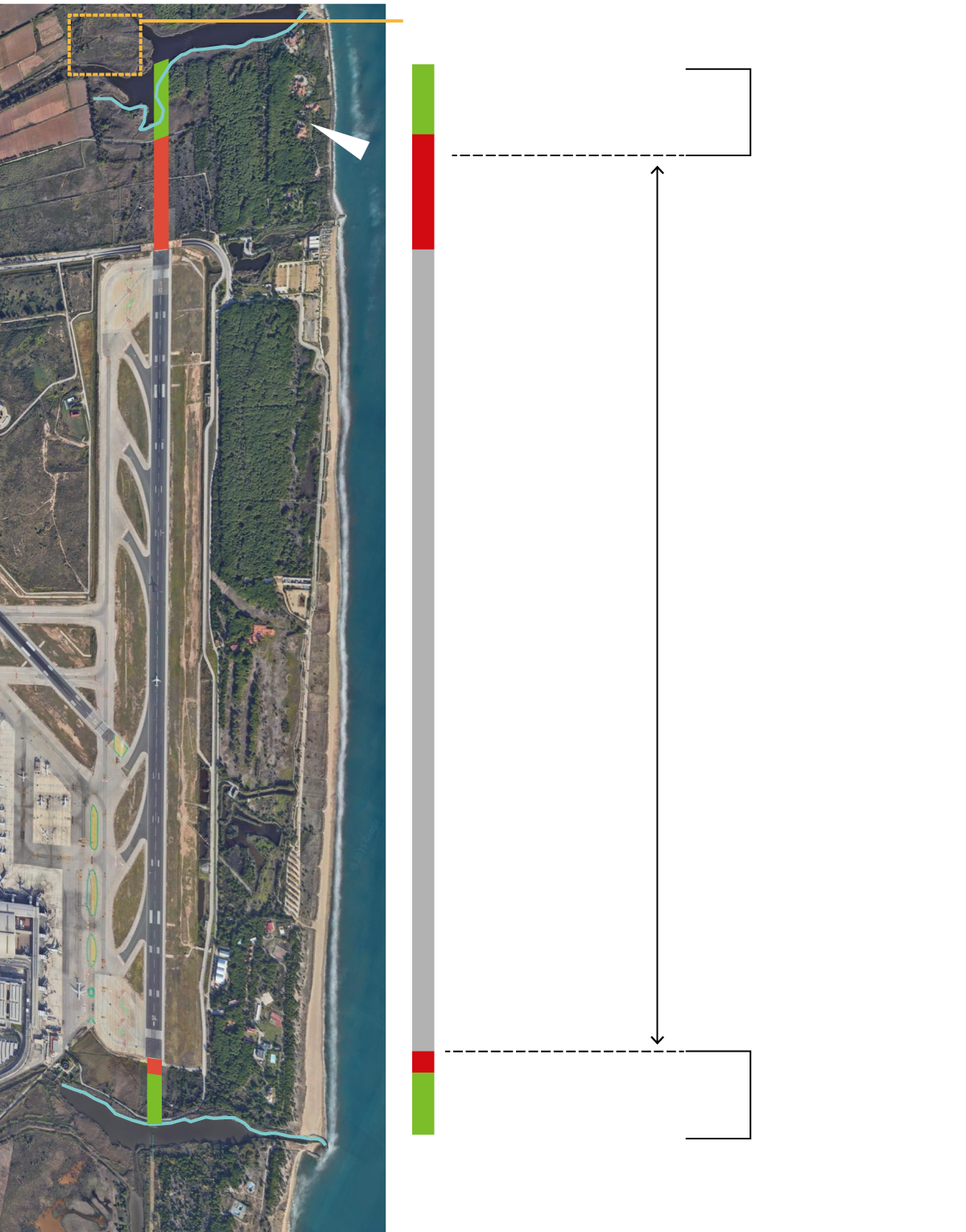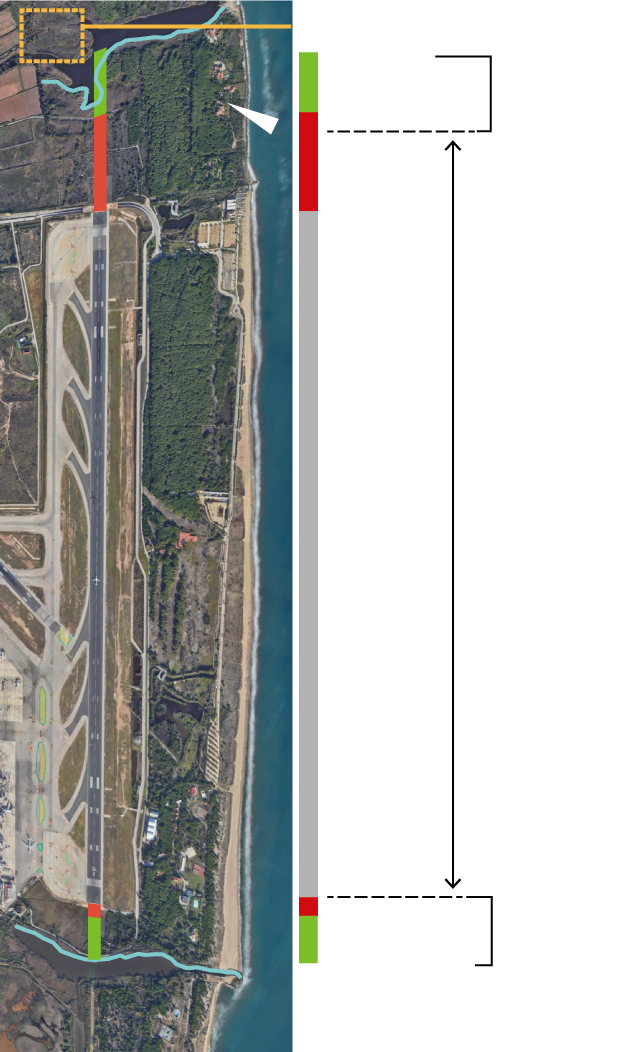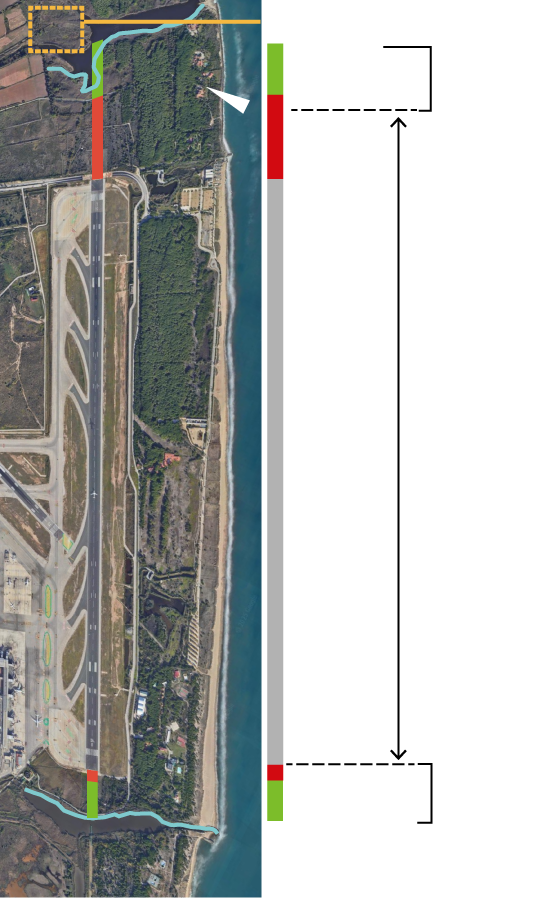Details of the airport expansion: 600 meters more asphalt and "moving" part of Ricarda
The proposal to extend the third runway will affect a section of the lagoon that will be compensated with new wetlands.


BarcelonaIt was supposed to be finalized at the beginning of the year, but the proposal to expand El Prat Airport by the President of the Generalitat (Catalan government), Salvador Illa, has been delayed until this Tuesday, at the beginning of summer. After months of meetings of the technical committee—which was relaunched this term after the first failed attempt in 2021—it's finally clear what future the new government wants for the infrastructure. These are the technical details of the solution.
In the presentation shared after Isla's appearance, the Socialist government specifies that its proposal involves adding 600 more meters of asphalt to the controversial third runway, the shortest, the closest to the sea, and where most planes take off. Where does this pavement surface come from? The runway itself will be extended by 500 paved meters in the direction of Ricarda, to which will be added a further 40 meters that will also be used for takeoffs, despite being part of a 240-meter safety zone (RESA, in aeronautical jargon). The remaining part of this area will be covered with vegetation to avoid asphalt, but will also alter one of the lagoon's branches. This "minimal occupation," in the words of the Government, would be offset by moving the affected wetlands further north, "maintaining the water surface and improving its quality."
On the map drawn in this document, the sea runway also extends towards Remolar Lake. There will be a new 60-meter paved area, which is also part of a 240-meter safety area. On this side, the impact does not reach the lagoon, but it does modify the existing natural environment before reaching the water. Once the works are completed, the runway will have been lengthened from the current 2,660 meters to 3,160. "It's an updated and improved proposal for Aena's," says Pere Suau-Sánchez, professor of air transport management at the UOC.
This represents an investment by Aena of nearly €3.2 billion, more than initially planned. It also includes the remodeling of Terminal 1, improvements to the neglected Terminal 2, a new "fast track" for the parallel runway, and the long-awaited satellite terminal to accommodate planes and passengers on intercontinental routes, which will be connected to the other terminals by an underground train. Furthermore, the proposed expansion will also allow for the development of the new airport city, a real estate project with 75 hectares dedicated to e-commerce, 58 hectares of logistics park, and 49 hectares for hotels, restaurants, and offices.
The government has made a point of emphasizing that its expansion proposal improves on what Aena had previously proposed and that the impact on Ricarda is 87 meters less than that of the airport operator. The Generalitat's presentation compared its alternative to an image showing the listed company would like to add 560 meters of runway to Ricarda, 240 meters of green RESA, and 10 meters of road, and would directly occupy two-thirds of the lagoon. Will this offset the environmental impact?
For the expansion to go ahead and receive the green light from the European Commission, this impact on habitats included in the Natura 2000 Network—estimated at around 27 hectares—must be compensated for in other areas. The Government assures that the compensation will multiply the area altered by the works by tenfold. the same rule that Aena already applied in its proposal 2021. Therefore, new land will have to be acquired, restored, and managed so that it can be considered a natural environment and validated by Europe.
Beyond that, Illa explained that a "green ring" will be created that interconnects the protected and agricultural areas around the airport. That is, making it compatible with the previous existence of the Baix Llobregat Agricultural Park. where the peasantry is also concerned how these compensations will be made. In addition, an "airport environmental fund" will be launched, to which Aena will allocate resources to improve the Llobregat Delta.
"The impact is the same as Aena's 2021 proposal. The last airport expansion already had a very negative effect on Ricarda's hydrology, and now the runway will be built directly on top of it. As a lagoon, it won't hold up; it will cease to exist and will become a drought," denounces José García, vice president of the fight against the degradation of the delta. In his opinion, trying to replace this area with another is a "fallacy" because "you would have to create a lagoon with the same characteristics and wait 300 or 400 years." "It's not about filling a hole with water and letting the ducks come," García says. The Zeroport platform has called a demonstration this Saturday, June 14, at 12 noon in the Plaça de la Villa in El Prat de Llobregat to protest against the expansion agreement.
Regarding another aspect that worries the expansion's detractors, the increase in CO₂ emissions, the Government assures that "they will be aligned with the objectives of the Green Deal and the same NET ZERO infrastructure in 2030". The objective of this project is for the airport to be able to reach the ninety operations per hour –today it is eighty as a result of an agreement with Aena to reduce the acoustic impact on nearby municipalities– for which it is authorized to operate and turn it into a hub intercontinental airport that attracts direct flights to "strategic" destinations such as Tokyo or New Delhi.
As for residents, the Socialist government assures that the current noise impact on the municipalities of Gavà will be reduced—because the takeoff point is moving further away from the town with the extension to the east—and Castelldefels—because cases of takeoffs on the runway are minimized—of large aircraft plus cargo that could not leave via the short runway.
Illa's proposal does not address another can of worms: the governance of the airport, on which Junts and ERC had called for greater involvement from the Generalitat and other local authorities or economic stakeholders. It also tiptoes around the role that Girona and Reus will play in the future Catalan airport system and only emphasizes the rail connection that was already planned to connect these infrastructures with the city of Barcelona. For now, the new El Prat airport will still not have a high-speed train station, which will have to be found in the municipality of El Prat de Llobregat.
Completion of works: 2033
The first step toward unblocking the expansion, as Isla had hoped since taking office, was Tuesday's announcement of the technical committee's proposal. The plan is expected to be completed by 2026, in parallel with the start of the process of a new master plan for El Prat Airport, which should be ready in 2028 and must also include a new strategic environmental assessment. It cannot be approved until the European Commission gives its approval. Brussels must also first finalize the letter of formal notice in which it still accuses Spain of failing to comply with measures to protect the Llobregat Delta.



